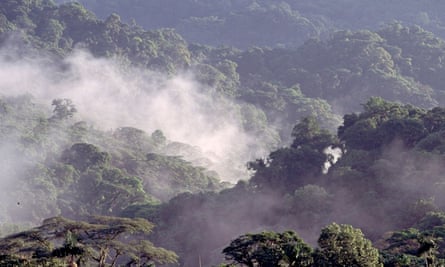This month, Costa Rica’s state-run electricity company announced that the country had gone 75 days using only renewable resources for electricity. Costa Ricans are the first in the world to power their country for so long without the use of fossil fuels, and the record-breaking achievement was quickly picked up by news agencies all over the world.
Costa Rican residents have certainly benefited from the clean energy, with electricity prices set to tumble between 7% and 15% in April. But despite the world’s congratulatory backslaps for the renowned green country, its clean energy production is not likely to last at this scale, nor is it a model that would work in many other parts of the world.
Costa Rica gets most of its electricity from hydroelectric plants and a recent period of unusually heavy rain allowed the country to reach the milestone. This clean power is bolstered by geothermic energy from the country’s volcanoes and a small amount of wind and solar power. Most years, these sources allow Costa Rica to generate approximately 90% of its electricity without burning fossil fuels.
The abundance of natural resources, combined with Costa Rica’s strong commitment to environmentalism, spurred policymakers to set a goal for carbon neutrality by 2021. If Costa Rica meets the target, it will likely become the first carbon-neutral country in the world, but there are obstacles.
The downside to hydropower is that it requires consistent rainfall. Though the dams in Costa Rica are now full, just months ago the country was suffering one of the worst droughts in its history. This forced Costa Rican utility companies to burn fuel to generate power, releasing greenhouse gases and causing rate rises.

This unpredictability in rain patterns isn’t unique to Costa Rica and is considered to be one of the primary effects of climate change. Ironically, this means that the bulging reservoirs that gave Costa Rica its green energy surge are likely to be attributable, at least partially, to climate change. And while there is plenty of clean power today, it could just as easily be gone tomorrow.
Even if Costa Rica were able to sustain 100% clean electricity production, the country still relies on petroleum for transportation, and emissions from this sector are the largest hurdle the country faces in reaching its carbon neutrality goal. The environment ministry reports that fuel burned by cars, buses and trains accounted for almost 70% of the country’s carbon emissions in 2014. According to customs there are only 200 or so hybrid cars in Costa Rica to take advantage of the energy produced by renewables on the grid.
The fact that even a country like Costa Rica, which has made major investments to produce clean energy, still struggles with these obstacles, shows just how difficult it would be for larger, more industrialised nations to follow in its footsteps.
With a population under 5 million and no major industry, Costa Rica uses much less power than most developed countries, and its geography of tightly packed volcanoes, rivers and mountains is more suited to producing clean power than most. Though small, Costa Rica is able to produce enough energy to power itself while leaving much of its wilderness intact.
To tap into all of the natural resources in the rest of the world would require environmental loss of a different kind, by altering rivers, displacing people and animals, and destroying vegetation. Solar and nuclear power offer other alternatives for clean energy but need more research and investment to make them cost-effective and safe. Even if it were possible to power the world’s largest countries with renewable energy, the destruction required would be unfathomable with only the current technologies.
These limitations, along with a lack of political will, are what has meant the world relied on fossil fuels for almost 90% of its energy since 1999. As admirable as Costa Rica’s feats in energy production may be, its model is not realistic for the world’s largest energy consumers.
But what most of the industrialised world lacks in natural resources, it more than makes up for with other assets. To seriously make a difference in global energy consumption would require significant investment in the research and design of new sources of non-polluting energy, a task most easily funded by richer nations.
While the world may not be able to tailor its energy programmes to Costa Rica’s geography-specific model, the lesson here is not about science and infrastructure, but about volition and ideals.